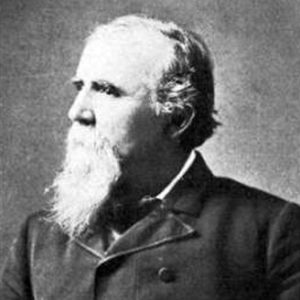calsfoundation@cals.org
Lucius Eugene Polk (1833–1892)
General Lucius Eugene Polk, who for a brief time made Arkansas his home, was a nephew of Lieutenant General Leonidas Polk (the “Fighting Bishop” whose responsibilities included Arkansas) and also a distant relative of President James K. Polk. His greatest claim to fame, however, was rising from the rank of private in the Yell Rifles at the outbreak of the Civil War to the rank of brigadier general under Major General Patrick Cleburne late in 1862. He achieved this command post while being wounded numerous times in the course of the war.
Lucius Polk was born on July 10, 1833, in Salisbury, North Carolina, to William J. Polk and Mary Rebecca A. Long. He was one of twelve children. When he was two, his family moved to a plantation near Columbia, Tennessee, that became the family’s homestead. After graduating from the University of Virginia in 1852, he moved to Arkansas and settled on a plantation near Helena (Phillips County).
Polk’s military career began with his enlistment as a private in the Yell Rifles, whose members were considered the best of Helena’s young men, on April 8, 1861. His first military action came soon after when the Rifles joined other Arkansas troops in Little Rock (Pulaski County) to prevent the contents of the Federal Arsenal from being removed and used by the Federal army or destroyed. Thanks to the actions of the Arkansas troops, they were used instead to bolster the Confederate cause.
Often, the career of a junior officer in the military is tied to that of a higher-ranking officer. In the case of Polk, his success bound to that of Patrick Cleburne. It was under Cleburne’s command that Polk was elected to a first lieutenant’s position. His assent continued when Polk followed him to command his old regiment as a colonel. After the Battle of Murfreesboro, Cleburne was made major general, and Polk again followed him, becoming a general and commanding Cleburne’s old brigade.
In 1862, Cleburne’s regiment was transferred across the Mississippi River with many other Arkansas units and “Confederatized” into service with the Confederate army building up around Corinth. Polk later commanded the troops covering the Confederate retreat from that campaign. He served in the campaign in Kentucky under General Kirby Smith and was wounded at the battles of Richmond and Perryville. Polk also fought at Murfreesboro, Tennessee, where his uncle, General Leonidas Polk, was in command of a division, as well as at Chattanooga. At New Hope Church in Georgia, Lucius Polk was severely wounded in the thigh on June 10, 1864, when the horse he was riding was stuck by a cannon ball. General Joseph Johnston remarked that “but for the valor of General Lucius Polk’s Brigade, we would not have carried the day.”
One report afterward listed him thereafter as “unfit for battle.” While recuperating from his wounds, he returned to the family plantation in Tennessee, where he remained for the rest of his life.
Polk married Sally Moore, a distant cousin, on August 19, 1863, at her family’s Forks of the Cypress plantation in Alabama. They had six children.
During Reconstruction, Polk had an encounter with the Ku Klux Klan (KKK) in Tennessee. One night, a group of KKK riders entered his property, saying they were there to whip an African American man for causing “a great deal of mischief.” Polk, hobbled from wounds caused by fighting for the Confederacy, faced the Klansmen, telling them “if you do so, it will be over my dead body, for I am his natural protector.” They left without attempting their intended violence.
Polk was late to enter Tennessee politics. In 1884, he was elected a delegate to the national Democratic convention meeting in Chicago, Illinois, and in 1887, he was elected to the Tennessee Senate.
Polk died on December 1, 1892, at his home in Tennessee. He is buried in St. John’s Churchyard at Ashwood, near Columbia, Tennessee.
For additional information:
Branch, Mary Polk. Memoirs of a Southern Woman “Within the Lines.” Chicago: Joseph G. Branch Publishing Co., 1912.
Warner, Ezra J. Generals in Gray: Lives of the Confederate Commanders. Baton Rouge: Louisiana State University Press, 1959.
Thomas E. Jordon
Lincoln, Arkansas
 Military
Military Lucius Polk
Lucius Polk 




Comments
No comments on this entry yet.